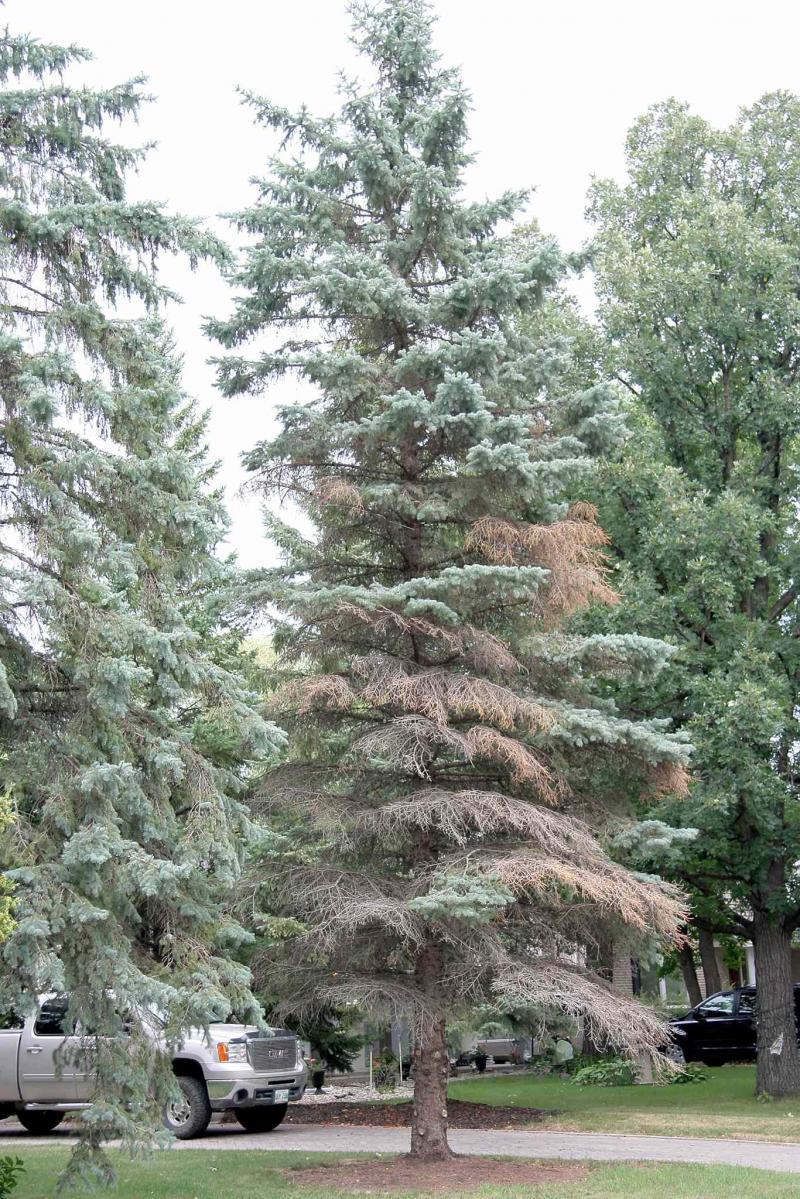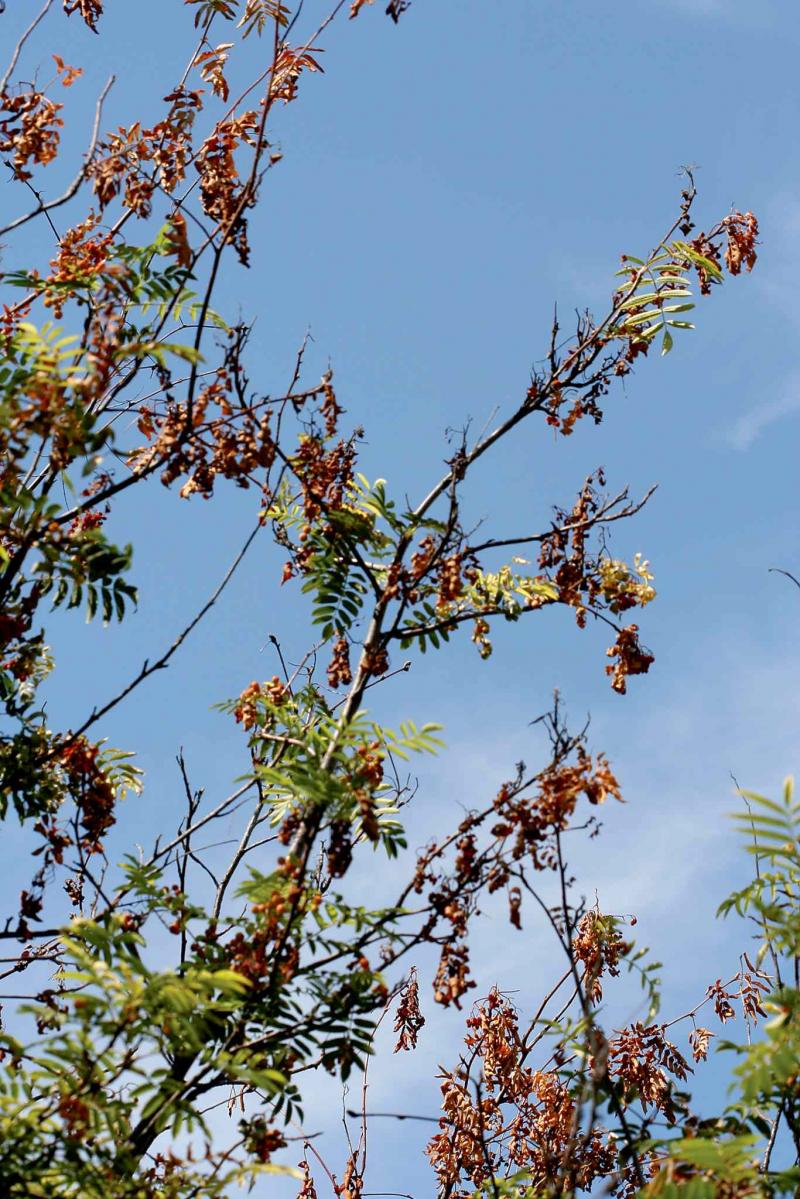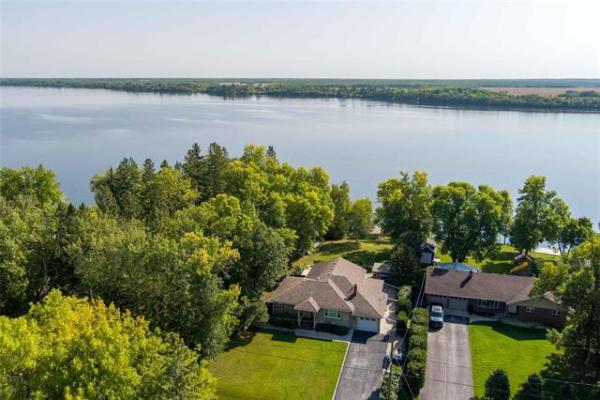

I receive hundreds of questions each year from readers, clients and those who visit my website. Here are two questions that keep popping up:
Question: In the past few years, you have commented and described the symptoms and control of fire blight disease on crabapple and mountain ash trees. Is the disease getting wise with time, and will there be a time in the near future when treating this disease will no longer be effective?
Answer: Fire blight is a bacterial disease that affects trees in the rose family such as apple, pear and mountain ash in our area. It does not infect roses.
Bacteria enter leaves and small twigs through natural openings, or through wounds caused either naturally through breakage, or through pruning with disease-contaminated tools, or even through rain. Insects, such as bees, wasps and even flies can spread the bacteria, especially to flowers in these trees. Under favourable conditions, the bacterium will continue to multiply and kill major parts of the tree.
I believe this disease is getting worse in southern Manitoba. In bacterial infected trees, I constantly see indiscriminate and poor pruning techniques. Early stages of this disease are controlled with sterilized pruning of each cut. At this early stage, copper-based fungicides can kill the bacteria if properly applied. Unfortunately, most owners of these trees do not understand or recognize the disease, and treatment is not undertaken at all. Significantly infected trees must be removed; unfortunately, they are not.
I regret I have to be pessimistic, but we lost the fight to control Dutch elm disease. We are losing the ability to control widespread black knot disease in Schubert chokecherry. It is impossible to say now, but I believe it will not be too many years into the future when we will no longer be able to control fire blight.
Question: I have many large Colorado spruce trees on my property, and they are not looking very healthy. Should I spend a lot of effort and cost in treating them?
Answer: As beautiful as young Colorado blue spruces are when you get them from a nursery/garden centre, they simply do not grow well on heavy clay loam soils in southern Manitoba, especially as they age. The maturing spruces usually develop in our area two very common and lethal fungal diseases called Sirococcus tip blight disease, which is treatable at an early stage, and Cytospora canker disease, which is not treatable. They can also be infected with treatable Rhizosphaera needle cast disease, one of several types of this disease. These disease problems are well-documented, along with treatments and colour photographs in my book Dr. Tree's Guide to the Common Diseases of Urban Prairie Diseases. To make matters worse, the yellow bellied sapsucker (a common spring woodpecker) drills horizontal rows of holes in the bark, which drip sap and resins, and providing entry points for diseases and pests.
Colorado spruce also gets infested with spider mites and various common insect pests such as spruce bud scales, spruce needle miners, spruce saw fly larvae and pine needle scales. Occasionally, the trees can be attacked by spruce pitch mass borers and spruce bud worms over the course of many years.
Most of these problems can occur on one mature Colorado spruce tree. Many clients spend a lot of time treating these problems each year. They believe it is worth their effort. If you have large numbers of spruce trees you probably will not have the time or resources to control these problems.
It is very hard to resist purchasing young Colorado blue spruces, but be forewarned: if you do purchase them in quantity you will have your work cut out for you often associated with a great deal of cost.
Michael Allen M.Sc.F., RPF (ret'd) is a consulting urban forester, tree diagnostician and certified arborist. He owns Viburnum Tree Experts. He can be reached at 204-831-6503 or 204-223-7709.



